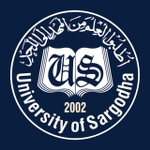Significance, Impact and Role, Areas of Research,
Much of early print media research was
qualitative. The first volume of Journalism
Quarterly, founded in 1928, contained articles
on press law, history, international
comparisons, and ethics. However, quantitative
research soon began to make its appearance
in this academic journal. An article
published in March 1930 surveyed the research
interests of those currently working
in the newspaper and magazine fields and
found the most prevalent type of study to be
the survey of reader interest in newspaper
content. The June 1930 issue contained an
article by Ralph Nafziger, “A Reader Interest
Survey of Madison, Wisconsin,” which
served as the prototype for hundreds of
future research studies. The 1930s also saw
the publication of many studies designed to
assess the results of print media advertising.
This led to studies in applied research, and
several publications began to sponsor their
own readership surveys. Mostly, however,
the results of these studies were considered
proprietary.
As the techniques of quantitative
research became more widely known and
adopted, newspaper and magazine research
became more empirical. Wilbur Schramm
(1957) first recognized this trend in an article
in Public Opinion Quarterly that reviewed 20 years of research as reported
in Journalism Quarterly. Schramm found
that only 10% of the 101 articles published
between 1937 and 1941 concerned quantitative
analyses; by 1952–1956, nearly half
of the 143 articles published were quantitative,
a fivefold increase in only 15 years.
The reasons for this trend, according to
Schramm, were the growing availability of
basic data, the development of more sophisticated
research tools, and the increase in institutional
support for research.
By 1960, newspapers and magazines
were competing with television and radio
for audience attention and advertiser investment.
This situation greatly spurred
the growth of private-sector research. The
Bureau of Advertising of the American
Newspaper Publishers Association (subsequently
called the Newspaper Advertising
Bureau) began conducting studies on all
aspects of the press and its audience. In the
1970s, it founded the News Research Center,
which reports the results of research to editors.
The Magazine Publishers Association
also began to sponsor survey research at this
time. The continuing interest of academics
in print media research led to the creation
of the Newspaper Research Journal in 1979,
a publication devoted entirely to research
that has practical implications for newspaper
management.
In 1976 the Newspaper Readership Project
was instituted to study the problems of
declining circulation and sagging readership.
As a major part of the six-year, $5-million
study, a news research center was set up at
Syracuse University to abstract and synthesize
the results of more than 300 private
and published studies of newspaper reading
habits. The Newspaper Advertising Bureau
produced dozens of research reports and conducted
extensive focus group studies.


